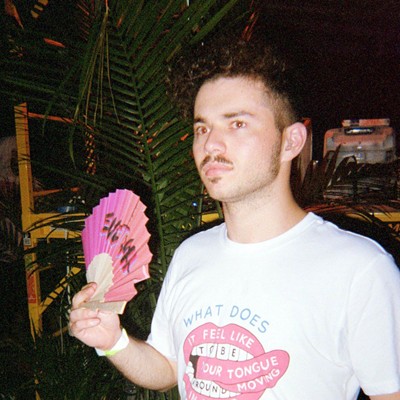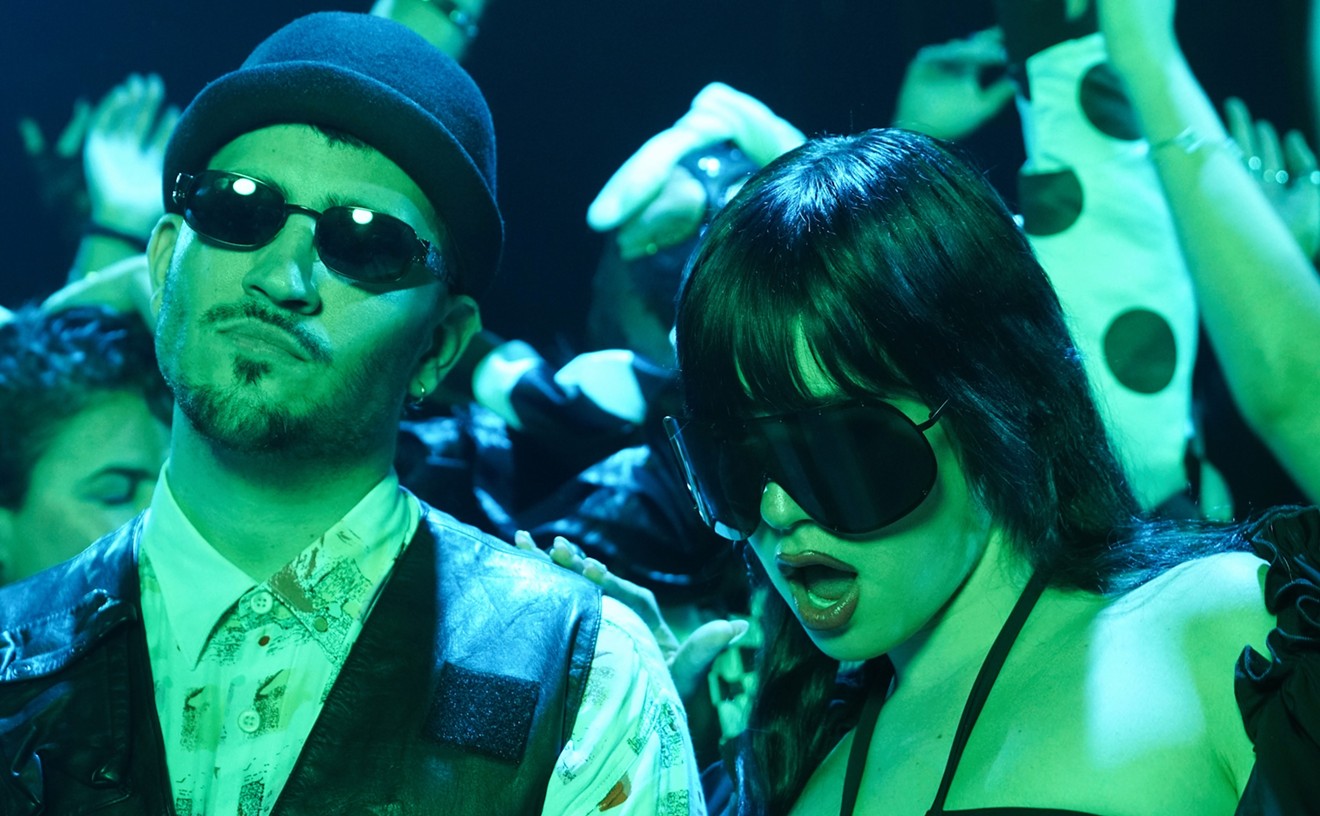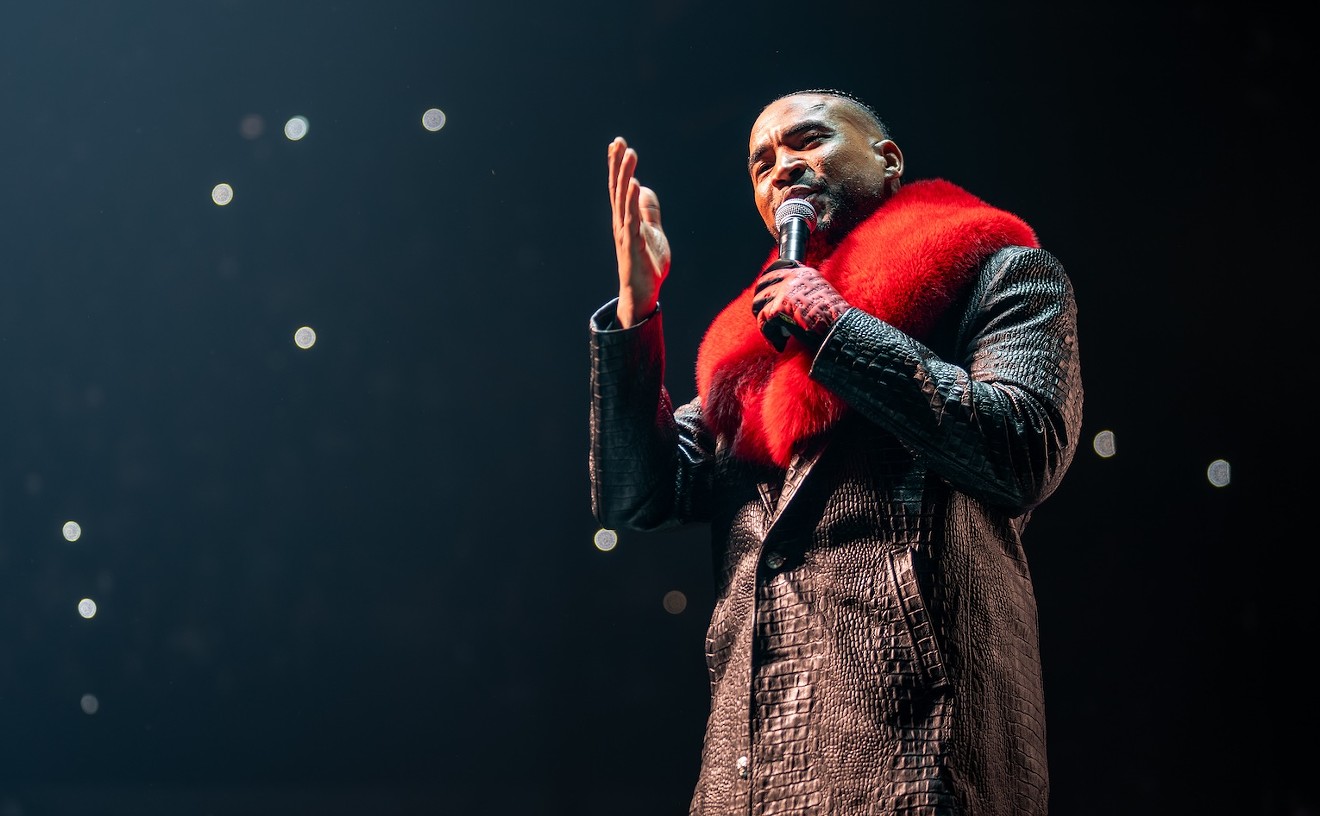On Wednesday, November 30, Stamper will be DJing alongside Floating Points and Dâm-Funk to commemorate Resident Advisor’s very first Art Basel showcase. In advance of her set, Stamper took the time to speak to New Times about touring in the midst of our nightmarish presidential election, making dance music a place of progression in a time of regression, and the joyous nature of her work.
New Times: “We Still Believe” began as an EP and went on to be the title of your Saturday night residency at Smart Bar. Having now used that phrase as the title of your first major North American tour, has the philosophy behind “We Still Believe” changed at all over the course of your travels?
Marea Stamper: Actually, the phrase came from something that happened at an underground event I threw with some friends in Kentucky. It popped in my mind, and I grabbed a cardboard box and cut it open to unfold it and wrote “We Still Believe” with a shoe-polish marker. We carried the sign around for a long time, putting it up at various illegal events, but eventually it was lost somewhere.
Then, when I became a resident at Smart Bar, I brought the concept back, but we upgraded from cardboard to neon. The meaning was always open-ended. The song of the same title lists some things I still believe in, but
The regrettable outcome of the 2016 presidential election arrived in the middle of your current tour. Having been on the road both immediately before and after November 8, has there been a palpable difference in the mood of club-goers?
There was no getting around the way the election made people feel. The first show after Trump won was at Smart Bar. Before we played, everyone went to dinner. I hadn’t seen Joe Shanahan, the owner of the
For those six hours, it was the only safe place on earth for me. I can’t speak for anyone else, but over and over I heard versions of, "I’m so glad we’re all here together.” The mood was sad, angry, stunned, energized.
Versions of these sentiments played out throughout the tour. It was always waves of grief, joy, and fury crashing into one another. And every show was seemingly more and more rammed after the election. People flew in from around the world. People cried in the booth and on the dance floor. It was unreal. As much as anything, the tour became a place to process this thing that had happened and a place where it was finally OK to feel happy for a second. In my life, I will never forget this month.
In one of your most frequently cited quotes, you emphasize the importance of electronic music providing a space of
I think it’s important to note that dance music happens on Earth and, accordingly, it comes with all the bullshit that any
I can remember one illegal B.Y.O.B. gay club under an adult bookstore that we used to go and dance at. I walked up to the door one night and my middle school social studies teacher was checking IDs, which of course I didn’t have. Plus, the fact that I’d been a student less than a year ago probably gave my age away. I remember we just sort of looked at one another; neither of us
Although currently based out of Chicago, your experience as an acolyte of electronic music, as well as being a performer, has taken you around the world. You’ve played in Miami on several occasions and even spoke to New Times in 2013. Do you have any favorite Miami stories, whether as a DJ or simply as a member of an audience?
One time when I was in Miami for Winter Music Conference, a colleague of mine had been missing for a day and we were all looking for him and calling him to no avail. I was just walking down the street when suddenly he literally fell out of an Escalade holding a champagne flute and a half-empty bottle of Veuve. He’d been stranded at Puff Daddy’s mansion. I have been sworn to secrecy about the further details of his experience during that day, but it was one of the great Miami moments of all time.
In the days since the election, there has been a lot of talk of people mobilizing in order to be prepared to combat four years of likely regressive policies. Having served in various occupations within electronic music, how have you sought to advance the conversation on
I’m a lot less interested in talking than I used to be. I will be marching on Washington with a lot of very pissed-off folks.
As far as what can be done to advance the conversation about
I have several projects under development right now that aim specifically to address institutional challenges that various kinds of folks face in dance music. I am interested in being useful in direct, tangible ways. Sometimes that means fundraising. Sometimes that means providing needed items to people who are actively protesting. Sometimes it means part of my DJ fee buys water in Flint, Michigan. And sometimes all this means turning to a friend or an acquaintance and engaging them directly about a problem. But a lot of what I think we will all be doing is just supporting and loving the people around us as they fight a tough fight. I fear we’re gonna have a whole hell of a lot of people that need extra loving — even more than usual.
You’ve spoken a lot about the anticipation of another Disco Demolition moment as it relates to dance music and popular culture. Do you think that bubble has already burst, albeit quietly, or do you think a louder backlash is forthcoming?
We’re definitely in the zombie moment of EDM. It’s dead, but the lumbering corpse is still walking around and fucking up FM radio. I’d say at this point, people are looking for substantial music across the board in every genre. I’m sure that mainstream pop will continue to largely suck (except for our lord and savior Beyoncé), but the amount of good music being made right now is unbelievable. You’ve got Frank Ocean with a hit record that crosses all borders of genre — he totally controlled every detail, working even with Wolfgang Tillmans. How great is that? And dance music is insanely good at this moment. I’m always shocked when I go to some massive event and the music is totally uncompromising. We’re on our way.
The last few years have seen a steep rise in your popularity, to the point where you’re now name-dropped by the likes of Iggy Pop. To ask bluntly, what do you think has set you apart from the crowd? Would you say it’s been the sheer quality and inspiring nature of your sets — the positivity behind
Well, I’m kind of funny-looking, so I’ve got that going for me, which is nice.
But seriously, I have been asked this a million times, and I’m not totally sure. I’m a DJ. I was made to do that. Some people were made to be doctors. Some people were made to be teachers. I do give it my all though and try my best to not just play the records but connect with the room and bring everyone together.
If there’s one thing I hope that’s driven all of this, it’s that I really, really love people, and I want them to feel joy and relief. I feel a deep and earnest spiritual calling to do this work and to be with them. Dance music, at its best, does all the things I care about. It heals hearts, it can bring people together, it reminds us of what’s most important, it brings us into the present moment. Dance can be a powerful tool of fellowship. I’m on a mission from God. I don’t ask too many questions. I just show up and follow orders.
You’ve said in the past that your sets are never planned out in advance. Has playing to larger audiences than you were even three years ago affected your approach to different crowds and different rooms? Might a smaller room with a smaller, more niche crowd hear deeper cuts or vice versa?
I really don’t place records on a hierarchal scale in terms of what’s highbrow or lowbrow. What’s a deep cut and what’s accessible? I dunno. Removing that arbitrary boundary leaves a lot more tools in my box when it’s time to go to work. I love rap and dancehall and house music and disco all the same, and some of the greatest pleasure I feel is when I am able to insert something from one world into another. One time I played “Puttin' On the Ritz” by Taco at Panorama Bar. I played Kanye when DJ Harvey and I played together at Smart Bar.
So wherever I am, there’s an entry point that I am comfortable with. I tunnel in wherever people are and figure out how to say what I am trying to say. I am always in conversation with the room. There’s a kind of diplomacy. I want to tell whoever is
As an industry veteran who has attracted a wider audience in the last few years, you’ve spent a lot of time both in and out of the booth. What advice, whether it be to bedroom producers looking to make a breakthrough or young people looking to buy their first turntable, would you give to someone looking to bring their craft to a live setting?
Wear your heart on your sleeve. This is about connection. Be vulnerable. Do your best.
November saw the physical release of your new track, “He Is the Voice I Hear." Is a wider release in the works, and is it a tease of something larger?
Yes, there will be a wider release. We made a special version of the record for prerelease, and that’s what you see circulating now. It’s got the audio etching on the reverse. It is the beginning of a larger work which brings together a lot of people I really admire and returns to an older way of making records, I guess. I think you can hear that in the single. The strings, the keys — it’s all real. I’ll be woodshedding from January to April with my partner Rupert, figuring out how to make the damn thing and get all the pieces to fit together. But there’s gonna be an album when the fat lady’s done singing.
What can audiences expect from your upcoming set with Floating Points and Dâm-Funk?
I’m going to try to not embarrass myself next to two geniuses.
RA at Art Basel with Floating Points, DâM-FunK, and











